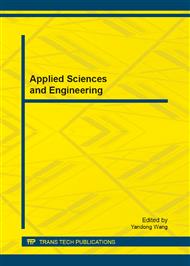[1]
Robin S. SHARP, Dvid J.N. LIMEBEER: A Motorcycle Model for Stability and Control Analysis, Multibody System Dynamics Vol. 6 (2001), pp.123-142.
Google Scholar
[2]
Robin S. SHARP: Stability, Control and Steering Responses of Motorcycles, Vehicle System Dynamics Vol. 35 (2001), p.291–318.
DOI: 10.1076/vesd.35.4.291.2042
Google Scholar
[3]
Gu Liang, Zhang Zhenhua, Qu Jinli: Research on Transient Response of Motorcycle with Two Tires in Collision with Ground Simultaneously, Journal of Beijing Institute of Technology Vol. (19) 1 (1999), pp.23-27.
Google Scholar
[4]
Zhu Tianguo: A Substructure Synthesis for Structural Syanmic Analysis – One of Analysis for Motorcycle Vibration using Computer Simulation System, Journal of Chongqing University Vol. 12(5) (1989) pp.115-123.
Google Scholar
[5]
Zhu Wenjian, Chen Quanfu: Optimum Design of Suspension System to Improve the Comfort of Motorcycle Ride, Journal of Shanghai Jiaotong University Vol. 26(1) (1992), pp.36-46.
Google Scholar
[6]
Zhu Caichao, Luo Jiayuan, Huang Zehong, Xie Yongchun: Dynamic Analysis of Motorcycle Frame, Journal of Chongqing University Vol. 26(7) (2005) pp.14-17.
Google Scholar
[7]
Huang Zehao, Xu Zhongming, Zhang Zhifei, Zhou Kun, Wang Xianguo: Brief Report on Research Works of One Paper, Transactions of the Chines Society for Agricultural Machinery Vol. 37(9) (2006), pp.208-210.
Google Scholar
[8]
Cao Guangqun, Zhang Yanhua, Liu Shuhua: Simulation Analysis for Launch Dynamics of Multiple Launch Rocket System Based on ADMAS, Ordnance Industry Automation Vol. 28(2) (2009), pp.32-35.
Google Scholar
[9]
Deng Yadong, Yu Lu, Su Chuqi: ADAMS for simulation of vehicle handling and stability, Engineering Journal of Wuhan University Vol. 38(2) (2005), pp.95-98.
Google Scholar
[10]
Wang Yong, Zhang Zhao, Huang Yingyun, Liu Zhen: Dynamical Simulation of the Crankshaft System of Engine Based on ADAMS, Ship & Ocean Engineering Vol. 37(4) (2008), pp.31-34.
Google Scholar
[11]
Lu Shaobo, Xu Zhongming, Zhang Zhifei, Ma Yongzhang: Virtual Experiment of Ride Comfort of Motorcycle Based on ADAMS, Computer Simulation Vol. 24(3) (2007), pp.250-253.
Google Scholar
[12]
Xiao Xuefei, He Tianming: Vibration Analysis of Motorcycle Virtual Prototyping Based on MSC. ADAMA, Small Internal Combustion Engine and Motorcycle Vol. 35(5) (2006), pp.53-55.
Google Scholar
[13]
Dong Hongliang, Deng Zhaoxiang, Lai Fei: Simulation of handling stability of motorcycle based on rider-motorcycle system, Journal of Jilin University (Engineering and Technology Edition) Vol. 39(3) (2009), pp.566-570.
Google Scholar


